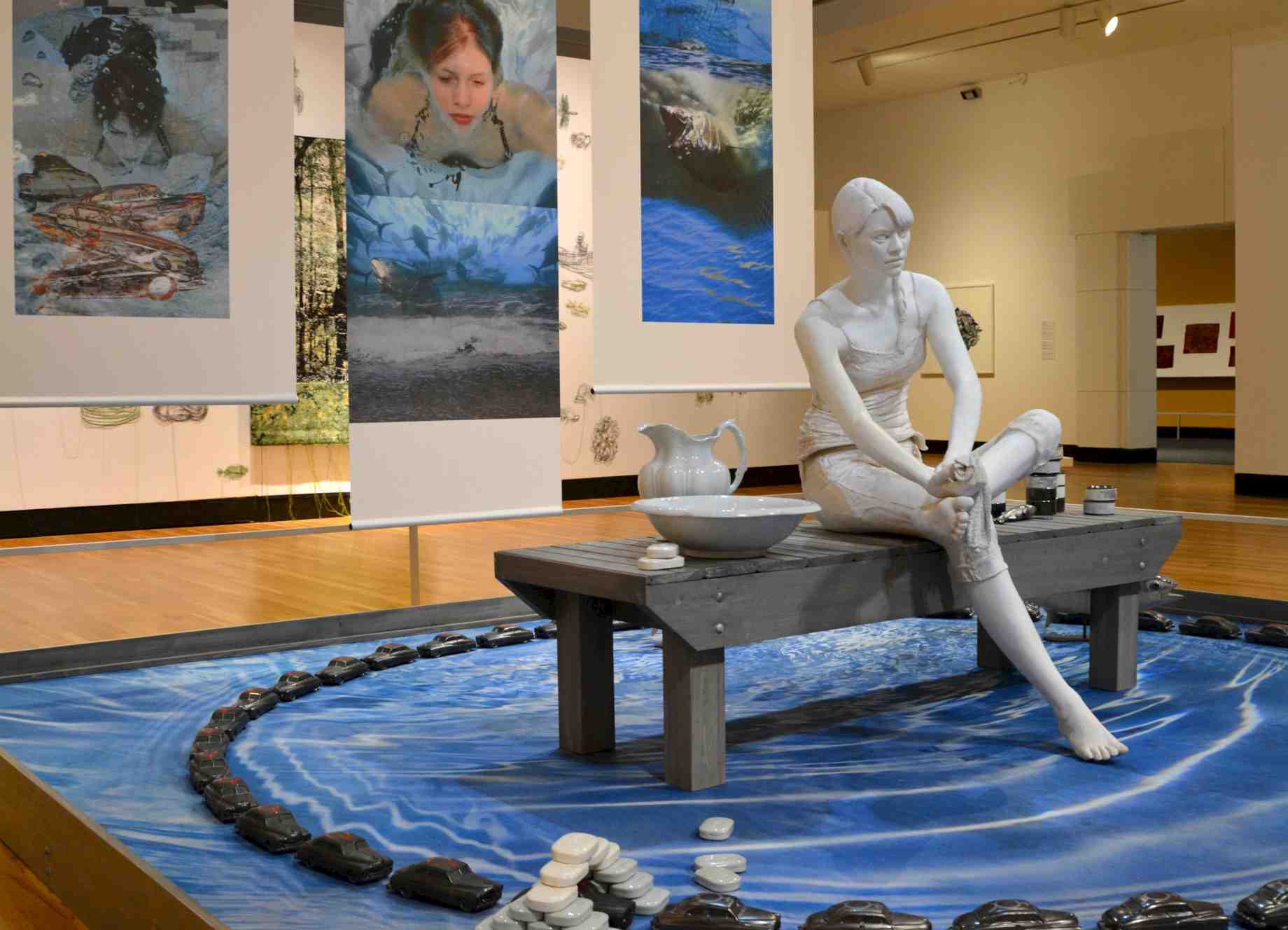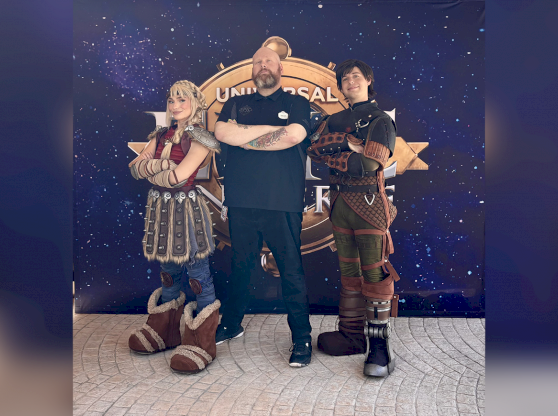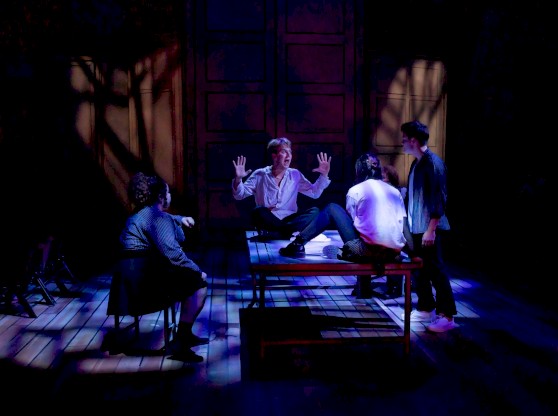Nan Smith, a UF ceramics professor, was recently featured in two articles in Ceramics Ireland based on her sculpture, “Mercury.”
Tina Bryne, editor of Ceramics Ireland interviewed Smith about the entire body of work. A featured review by critic Anthony Merino highlighted the importance of Smith’s recent installation titled “Mercury.”
Smith’s earlier works were based on spirituality and feminine nostalgia. Switching her focus to environmentally based sculptures involved research in science and health, new arenas for her.
Since 2010, Smith’s work has focused on the impacts to food sources and human health if humans don’t take care of the environment. This thought process inspired her installation “Garden.”
Smith moved to Florida from Philadelphia. She knew that Florida would be a nice environment to experience nature and a change from the city-lifestyle that she grew up in, she said.
“Gainesville isn’t typical Florida,” Smith said. “It has a lot of farming and wildlife. I went from living in an urban area with a studio to living in a home on land, where there is upland and wetland all on the same property.”
Smith has always loved flowers and landscaping. She has degrees in Ikebana and Japanese Tea Ceremony from the Japan House of the University of Illinois.
“When all of your interests are coinciding,” she said. “How could I disregard nature and the environment?”
In the installation, “Garden,” Smith compared industrialized farming and small, family-owned farms, the products they produce and the access that people have to healthy foods.
She researched by reading books by Michael Pollan about industrial farming practices, use of fertilizers and pesticides and green picking. She interviewed holistic doctors and drove to local farms to take photos of irrigation.
“People who aren’t in a university setting don’t have the time to research issues of food and health deeply,” she said. “Organic food can be very expensive for the average family today.”
Next, Smith created “Summer is Over” and “Summer is Over II” in response to the gulf oil spill in 2010.
“Being in Florida, we watched our water become polluted,” she said. “These sculptures were based on the emotions I felt at the time, the public desperation and the fact that Floridians had no control over stopping the spillage.”
Both pieces include photomontage decal images of a woman screaming fired onto ceramic.
Also in 2010, Smith created a piece called “Spill” that features a woman with her hands on her hips standing on an oil barrel.
“She is adamant what had been done,” Smith said. “She is angry and stands above the oil spill and impacted nature below her.”
At the time of the oil spill, Smith began talking to scientists on campus about environmental pollution through oil and coal production. Dr. Dorota Haman, the chair of UF’s Agricultural and Biological Engineering program, met Smith as a student of a ceramics class Smith was teaching in the 1980s.
“She loves art as much as I am interested in science,” she said. “Our commonality was working with ceramics.”
Haman connected Smith with Dr. Andrew Kane, a UF professor who focuses in aquatic pathology and toxicology.
According to Kane, the gulf menhaden was the first fish impacted by the oil spill in the gulf. Gulf menhaden clean water of toxins. They’re also eaten by bigger fish, which can bio-magnify toxins up the food chain.
Kane arranged for scientists at the Cedar Key Marine Lab to catch menhaden specimen for Smith to sculpt.
“I didn’t want to sculpt from a book,” she said.
During her research and development for the “Mercury” installation, Smith went to Israel for an artist residency and conducted an auxiliary research trip to interview scientists at Israeli Marine Labs. Her trip was funded by the UF Division of Sponsored Research.
Kane connected Smith to Dr. Arik Diamant, the director of the national center for marine culture in Israel. During her research on coal production and the impacts of methyl mercury, Smith interviewed Dr. Daniel Obrist, of the desert research institute in Reno, Nevada; Dr. Barak Herut, Dr. Nurit Kress and Dr. Efrat Shoham-Frider, mercury scientists at the Israel Oceanographic and Limnological Research Institute in Hafia Israel; Dr. Muki Speigel, Dr. Bill Koven and Dr. Amos Tandler, who work on domesticating bluefin tuna at the National Center for Mariculture in Eliat, Israel; Dr. Tamar Zohary, director of Kinneret Limnological Laboratory in Migdal Israel, which moneters and studies water cleansing in Lake Kinneret.
Smith chose the bluefin tuna as her subject species because it is a large pelagic fish that eats smaller fish, lives longer than other fish and can be strongly impacted by mercury, she said.
She traveled to the Monte Ray Bay aquarium in California, which holds the largest captive bluefin tuna collection.
“I wanted to see how they move so that I could sculpt them,” she said. “I needed to see what colors they are without the reflective lights seen in two dimensional representations and videos.”
Smith spoke with mercury scientists, scientists who are working to domesticate the bluefin tuna, water specialists, holistic medical doctors and people who measure mercury in fish.
She compiled data that scientists gave her, interview notes, videos, political and health information on the subject of mercury and its environmental impacts on her research website: www.mercuryartscience.com.
“I want to create something that resonates,” she said. “An image that possesses beauty and attracts people to the art, but it also needs to have a real narrative behind it. The form may be complex, but the imagery must have structure. I want to use visual components to make something dynamic and more than just decorative. If it doesn’t have meaning, it’s wasting my time. The best story I heard about the “Mercury” installation at the Harn Museum came second hand, she said I was told about a woman who went on four occasions to see the installation. She was determined to understand the art work and was drawn back to unravel its beauty and make sense of what she knew was a message. After the fourth visit, she looked at it and said, ‘I got I. I understand.’”



